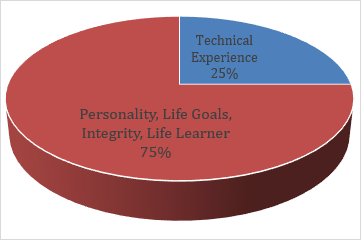I recently attended the Performance Evaluation Methodology for Building Occupancy Sensing Systems for HVAC Controls workshop, which followed the annual ASHRAE conference that just wrapped up in Kansas City, MO. The workshop focused on one of ARPA-E’s[1] research programs called SENSOR (Saving Energy Nationwide in Structures with Occupancy Recognition)[2], and brought together a diverse group of individuals, including researchers from national labs and universities, industry representatives, design engineers, and other interested parties.
 ARPA-E has an ambitious goal for the SENSOR program: reducing HVAC energy consumption by 30% in residential and commercial buildings, while also ensuring high levels of sensor reliability, occupant thermal comfort, and ease of commissioning. Moreover, there are aggressive cost targets for system implementation and a criterion for maintaining occupant privacy with any technology that is used. The ultimate goal of the program is to either develop a new ASHRAE standard/guideline or to integrate findings into existing standards/guidelines such as ASHRAE 90.1[3], 62.1[4] or Guideline 36[5].
ARPA-E has an ambitious goal for the SENSOR program: reducing HVAC energy consumption by 30% in residential and commercial buildings, while also ensuring high levels of sensor reliability, occupant thermal comfort, and ease of commissioning. Moreover, there are aggressive cost targets for system implementation and a criterion for maintaining occupant privacy with any technology that is used. The ultimate goal of the program is to either develop a new ASHRAE standard/guideline or to integrate findings into existing standards/guidelines such as ASHRAE 90.1[3], 62.1[4] or Guideline 36[5].
There are four project categories within the SENSOR program:
- Human occupancy sensors for residential use (binary presence/absence)
- Occupant counting sensors for commercial buildings
- Next generation CO2 sensors
- Laboratory and field testing and energy savings validation – systems testing and integration
Although it touched on all four areas, the workshop primarily concentrated on energy savings validation (category four above). The intent is that by validating the new technologies and demonstrating savings potential through lab and field-based testing, along with whole-building energy simulation, it will build confidence in the technology’s feasibility and reliability in hopes of leading to widespread deployment. The importance of the testing and validation portion of the program was put succinctly by the workshop moderator, who explained that when it comes to occupancy sensing technologies, “false negatives kill adoption, while false positives kill impact.”
The primary methods for reducing HVAC energy consumption in commercial buildings using occupant-based controls involve temperature setbacks and ventilation rate reductions when spaces are not occupied or are occupied at less than design occupancy. Temperature setbacks are relatively straightforward and easy to understand. When the occupancy sensor detects that the zone is empty, the temperature setpoint is adjusted by 2-3°F and the zone is placed in an “occupied standby” mode. As people return to the zone, the setpoint is then returned to “normal occupied” mode. Ventilation rate reductions are a bit more complicated but have the potential to save significantly more energy. Ventilation rate requirements are typically dictated by ASHRAE 62.1 and include a people-based (cfm/person) and an area-based (cfm/sf) outdoor air component both of which are dependent on the space type. As the number of occupants in the space changes, the outdoor air requirement changes as well and, theoretically, the ventilation rates can be dynamically adjusted to exactly match the needs of the space (i.e. “demand-controlled ventilation”).

These control strategies are not new but have had limited adoption and effectiveness in practice. Demand-controlled ventilation has long been required by ASHRAE 90.1 for certain spaces and the requirement has gradually become more stringent in each new edition. Historically, ventilation rates have been adjusted to maintain a CO2 level setpoint (e.g. 900 ppm) in a space, with the understanding that CO2 levels can serve as a proxy for the number of occupants. CO2 sensors, however, are notorious for drifting out of calibration and must be tested regularly in order to maintain their accuracy, something that is rarely done in practice. Some of the new technologies being investigated to ensure accurate person-count include radio frequency backscattering, utilizing Wi-Fi signal reflections, pressure sensitive flooring underlayers, microphones, and low-resolution cameras. Data streaming in from these devices would then be fed into algorithms to determine the actual number of occupants at any given time. In addition, next-generation CO2 sensors are also being developed, an innovation that would attempt to address the problems with the current technology.
I am eager to see how these research projects develop over the next couple of years and to learn about the results of the systems testing and energy simulation. Through the development of robust and affordable occupancy sensing technologies, we can hopefully realize the full potential of these advanced controls.
[1] ARPA-E (Advanced Research Projects Agency – Energy) is an agency within the U.S. Department of Energy that is tasked with advancing high risk, high reward energy technologies.
[2] All ARPA-E programs are designated with pithy acronyms.
[3] Energy Standard for Buildings Except Low-Rise Residential Buildings
[4] Ventilation for Acceptable Indoor Air Quality
[5] High Performance Sequences of Operation for HVAC Systems


